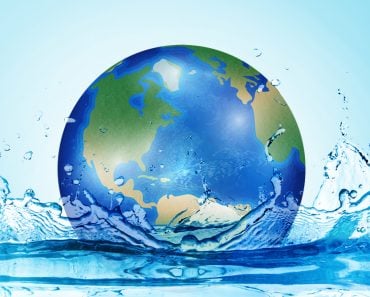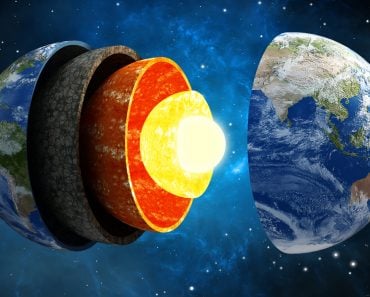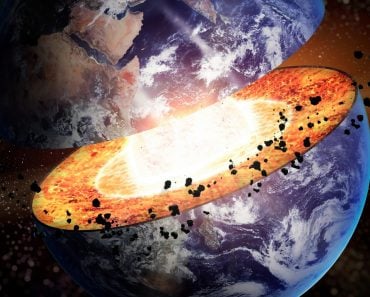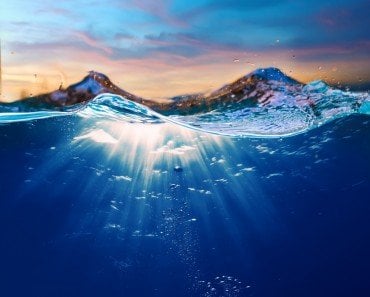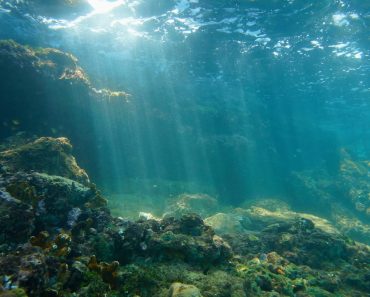Table of Contents (click to expand)
Yes, there is an entire ocean hidden somewhere on Earth! Scientists have found evidence of a large body of water deep within the Earth’s mantle, in an area called the “transition zone.” This water is trapped within the molecular structure of a mineral called ringwoodite, and is thought to be three times the size of all the oceans on the surface of the Earth combined!
Is it possible that human beings have missed out on an entire ocean? And no, I don’t mean an ocean hidden by the government because it holds some secret alien base. Let’s leave the conspiracy theories to the Illuminati lovers. In fact, I mean an actual entire ocean that is unbeknownst to us.

As it turns out, it’s totally possible! Are you wondering how we could have possibly missed it, despite having hundreds of satellites mapping and studying the Earth at all times? Well, it’s a good question. The thing is, this ocean has an incredible strategy to continue to evade our observation. Believe it or not, this ocean is so well hidden… because it’s situated under the ground!
Recommended Video for you:
Inside The Earth
What lies inside of our planet has been the subject of serious geological speculation for centuries. Most of us have at least a general perception of what lies beneath our feet, but there is still a great deal that we don’t know.
First of all, there is the Earth’s crust, which is extremely thin. In fact, if the Earth were the size of an apple, the crust would be thinner than the apple peel! This thin crust that makes up less than 1% of the Earth’s weight, ‘floats’ on the mantle below it. The mantle is largely solid in terms of its natural state, but if we consider its properties over vast geological time periods, we see that it actually acts like a viscous fluid, enabling the movement of the tectonic plates of the crust. The mantle composes about 40% of the Earth’s weight. Beneath the mantle lies the outer core, which envelops the inner magnetic core of the planet.
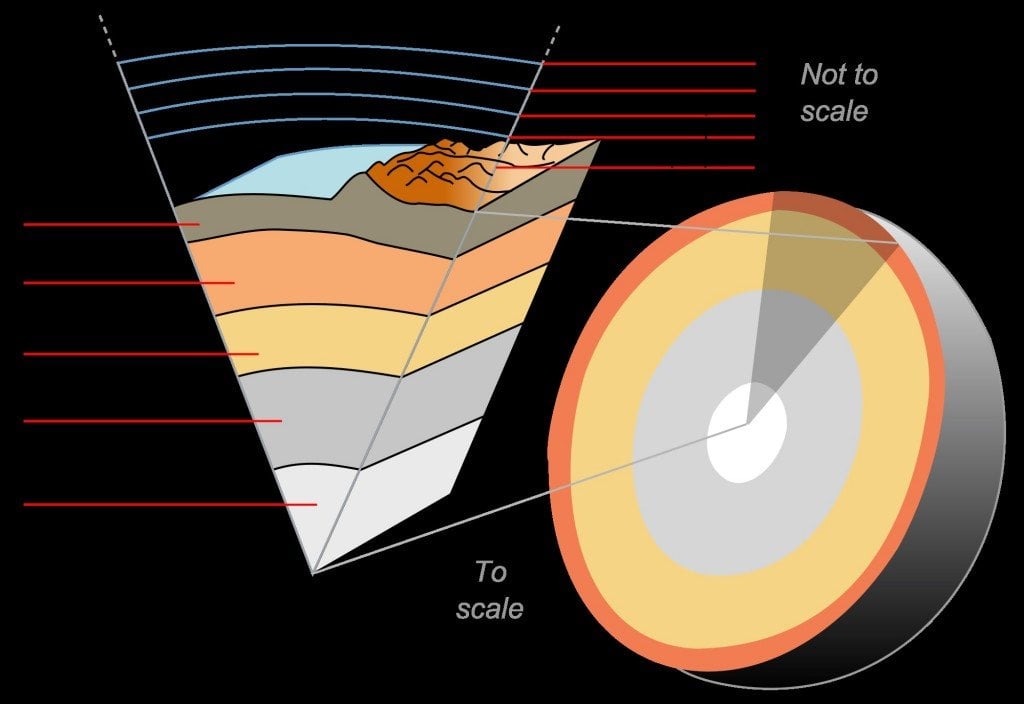
However, our search for this secret ocean doesn’t take us that deep inside the Earth’s innards. Our journey ends at 660 km beneath the North American continent, in an area called the “transition zone” within the mantle.
Underground Water
Northwestern University’s geophysicist Steve Jacobsen and University of New Mexico’s seismologist Brandon Schmandt found pockets of magma deep within the mantle. This is usually a sign of the presence of water at these depths. Scientists have long speculated about the existence of water in the rocky layers between the upper mantle and the lower mantle. However, Jacobsen and Schmandt were the first to produce direct evidence to support this theory.
The question is, how would water persist under such great pressure? Jacobsen claims that water can exist at such depths because it doesn’t exist in its natural liquid form, but neither does it exist in its solid form (ice), or in its gaseous form (water vapor). It actually exists in a separate fourth form!
This fourth form is water trapped within the molecular structure of a mineral called ringwoodite. The immense pressure and the high temperatures cause water molecules to split up and form a hydroxyl radical (OH), which then binds itself to the mineral’s crystalline structure.
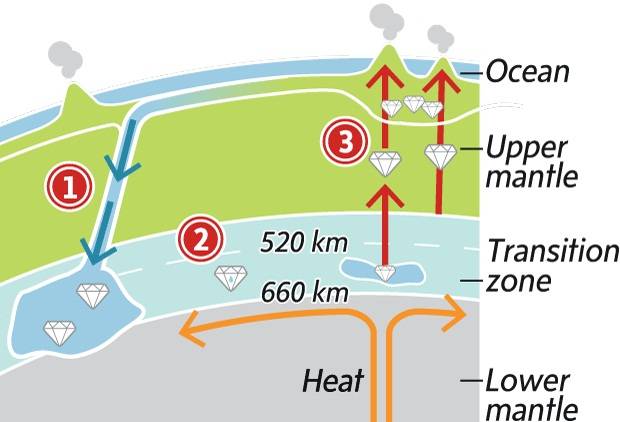
Ringwoodite Discovered
This unique mineral was first discovered recently after a volcano in Brazil spewed out a diamond that had ringwoodite encased inside of it. This tiny piece of ringwoodite was carrying an astonishingly large amount of water! Of course, scientists couldn’t help but be intrigued by this interesting new mineral.
“The ringwoodite is like a sponge, soaking up water,” Jacobsen said. “There is something very special about the crystal structure of ringwoodite that allows it to attract hydrogen and trap water. This mineral can contain a lot of water under conditions of the deep mantle.”
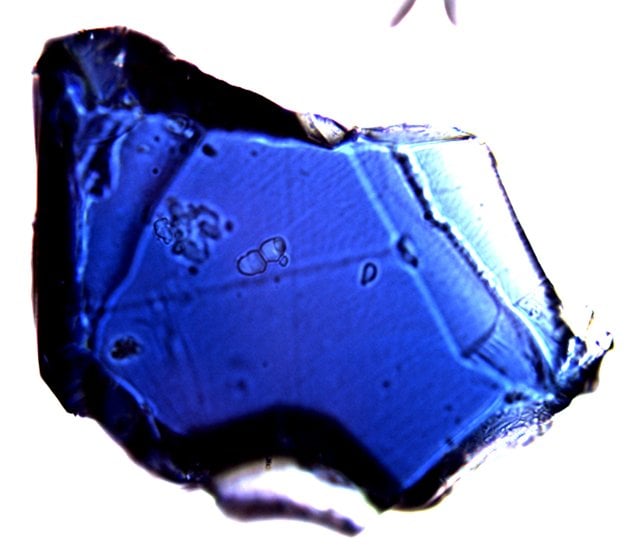
To test this hypothesis, Jacobsen and his associates managed to synthesize ringwoodite in laboratory conditions and mimicked the high temperatures and pressures that it would undergo in the transition zone. By studying how this artificial ringwoodite functions, combined with years of research studying seismic activities, they came to the conclusion that there must definitely be a stable water reservoir deep within the mantle.
Not only is it stable, but it’s also really huge! In fact, if just 1% of the weight of mantle rock located in the transition zone is H2O, that would be equivalent to nearly three times the amount of water in our oceans!

Why Is This Discovery Relevant?
This new discovery changes everything we know about the early stages of life on Earth! As we all know, water is the key to life, and trying to understand how oceans developed is the critical core of studying how life began on our planet. For the longest time, scientists theorized that water was brought to Earth by icy comets and meteorites crashing into the forming planet. However, with this discovery, the evidence seems to point in a new direction.
It now seems quite plausible that water was actually formed indigenously within the Earth itself, and was first brought out onto the surface in its gaseous state. “The surface water we have now came from degassing of molten rock. It came from the original rock ingredients of Earth,” Schmandt said. This process, it has been suggested, is cyclical. The new findings will help scientists better understand the Earth’s long-term water cycle.
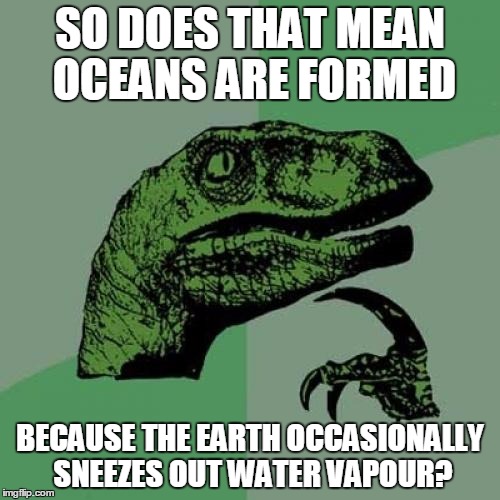
The truth is, we know hardly anything at all about what goes on deep inside the Earth. We speculate, yes, but the more we study this planet, the more outrageous it seems to be! Fortunately, geologists are a tireless bunch that know better than to quit in the face of adversity!

